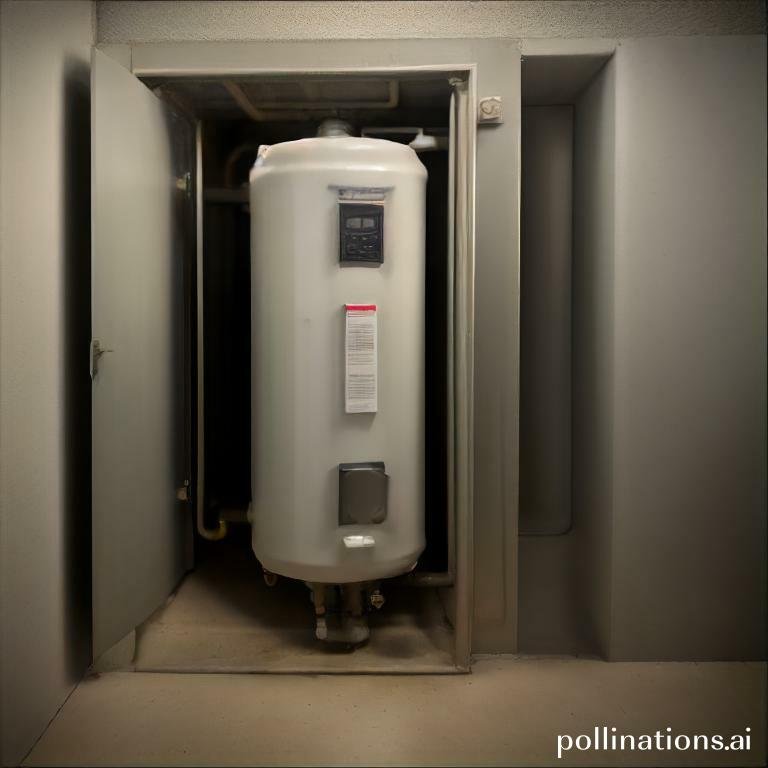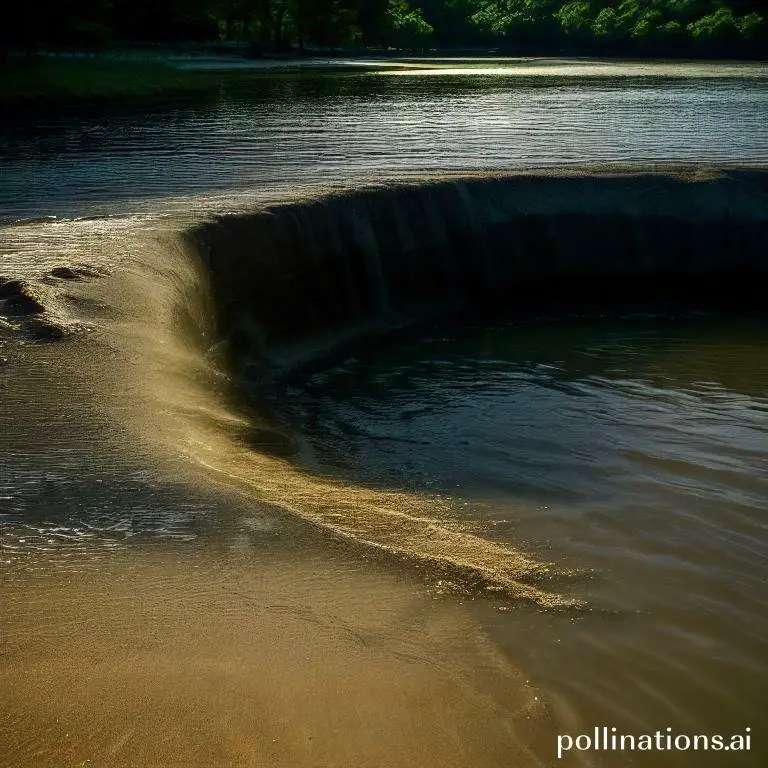
II. The recommended frequency for sediment removal varies depending on factors such as water hardness and usage.
III. Generally, it is recommended to flush the tank and remove sediment at least once a year to maintain optimal performance and prolong the lifespan of the water heater.
Gas water heaters are an essential part of many households, providing hot water for daily needs. One crucial aspect of maintaining these heaters is sediment removal.
Regularly removing sediment helps to improve the efficiency and longevity of the heater, ensuring it continues to provide hot water when needed. By comprehending the frequency at which sediment should be removed, homeowners can stay on top of maintenance and avoid potential issues down the line.
In this article, we will discuss the recommended sediment removal frequency for gas water heaters, providing valuable insights for homeowners.
Signs of Sediment Buildup
Sediment buildup in water heaters can lead to various issues and negatively impact its performance. Realizing the signs of sediment buildup, you can take necessary steps to prevent further problems and maintain the efficiency of your hot water supply.
1. Decreased Hot Water Supply
One of the most common signs of sediment buildup in a water heater is a decreased hot water supply. As sediment accumulates at the bottom of the tank, it takes up valuable space that could be used for hot water storage. This can result in reduced hot water availability, especially during peak usage times. If you notice a decrease in the amount of hot water your heater produces, sediment buildup may be the culprit.
2. Noisy Operation
Another indication of sediment buildup is noisy operation. As water heats up and moves through the tank, sediment can cause rumbling, popping, or banging sounds. This occurs when the heated water interacts with the layer of sediment at the bottom of the tank. If you hear unusual noises coming from your water heater during operation, it is likely that sediment has accumulated and needs to be addressed.
3. Fluctuating Water Temperature
Sediment buildup can also lead to fluctuating water temperature. When sediment settles at the bottom of the tank, it acts as an insulating barrier between the heating element and the water. This can cause the water temperature to fluctuate, resulting in hot water turning cold or vice versa. If you experience inconsistent water temperature at the same time using hot water, sediment buildup may be the underlying cause.
In order to prevent these issues and maintain the efficiency of your water heater, regular maintenance and sediment flushing is necessary. Consult the manufacturer’s instructions or seek professional assistance to properly clean and remove sediment from your water heater.
| Signs of Sediment Buildup |
|---|
| Decreased hot water supply |
| Noisy operation |
| Fluctuating water temperature |
How to Remove Sediment
Sediment buildup in a tank can cause various problems, including reduced efficiency and potential damage to the system. To ensure optimal performance and prolong the lifespan of your tank, it is essential to remove sediment regularly. Follow these steps to effectively remove sediment from your tank:
1. Turn off gas supply
Prior to starting the sediment removal process, it is crucial to turn off the gas supply to ensure safety. Locate the gas valve and turn it off completely.
2. Drain the tank
Start by draining the tank to remove any remaining water and sediment. Attach a hose to the drain valve and direct it to a suitable drainage area. Open the valve and let the water flow out until the tank is empty.
3. Flush the tank
To thoroughly remove sediment, flushing the tank is necessary. Close the drain valve and open the cold-water supply valve. Allow the water to fill the tank partially and then drain it again. Repeat this process a few times to ensure all sediment is flushed out.
4. Refill the tank
Once the tank is completely flushed, it’s time to refill it. Close the drain valve and turn on the cold-water supply valve. Monitor the tank as it refills and ensure there are no leaks.
Frequency of Sediment Removal
Pertaining to maintaining the quality and efficiency of your household water system, sediment removal is an essential task. Sediment buildup can lead to clogged pipes, decreased water flow, and even damage to your appliances. In this section, we will pioneer the frequency at which sediment should be removed from your water system and the factors that can affect sediment buildup.
1. Manufacturer’s recommendations
Manufacturers of water systems often provide guidelines on how frequently sediment should be removed. These recommendations take into account the specific design and components of the system. Imperative to follow these guidelines to ensure optimal performance and longevity of your water system. Regular maintenance as per the manufacturer’s recommendations will help prevent any potential issues caused by sediment buildup.
2. Factors affecting sediment buildup
Several factors can contribute to the rate at which sediment accumulates in your water system. The quality of your water supply, the presence of minerals or impurities, and the age of your pipes can all play a role in sediment buildup. Additionally, the frequency of water usage and the size of your household can also impact sediment accumulation. It is crucial to be aware of these factors and take appropriate measures to address sediment buildup accordingly.
3. Recommended frequency for different households
The frequency at which sediment should be removed can vary depending on the specific needs of your household. Generally, it is recommended to inspect and clean your water system at least once a year. In contrast, households with older pipes, higher water usage, or poor water quality may require more frequent sediment removal. Consulting with a professional plumber or following the manufacturer’s recommendations can help determine the ideal frequency for your specific situation.

Benefits of Regular Sediment Removal
Sediment buildup in a water heater can have negative impacts on its performance and longevity. Regular sediment removal not only ensures optimal energy efficiency but also extends the lifespan of the water heater meanwhile minimizing the risk of breakdowns and costly repairs.
Improved Energy Efficiency
Extended Lifespan of the Water Heater
Sediment buildup can cause corrosion and damage to the inner components of the water heater over time. This can result in leaks, malfunctions, or even complete failure of the unit. Regularly removing sediment prevents these issues, extending the lifespan of the water heater. By investing in sediment removal, you can avoid the need for premature replacement and enjoy a reliable water heating system for years to come.
Lower Risk of Breakdowns and Repairs
When sediment accumulates in a water heater, it can lead to various problems that require costly repairs. Sediment can clog pipes, valves, and other crucial parts, causing reduced water flow, overheating, or even complete system failure. Regular sediment removal minimizes these risks, ensuring smooth operation and reducing the likelihood of unexpected breakdowns. By proactively maintaining your water heater, you can save yourself the hassle and expense of emergency repairs.
| Benefit | Description |
|---|---|
| Improved Energy Efficiency | Removing sediment enhances energy efficiency by eliminating insulation that hampers heat transfer. |
| Extended Lifespan of the Water Heater | Regular sediment removal prevents corrosion and damage, prolonging the water heater’s lifespan. |
| Lower Risk of Breakdowns and Repairs | Sediment removal reduces the chances of clogs, reduced water flow, and system failures. |

Professional Sediment Removal
Sediment buildup in various systems and appliances can lead to a range of issues, from decreased efficiency to potential damage. When faced with excessive sediment, essential to consider seeking professional help. Here are some key points to keep in mind:
1. When to seek professional help
If you notice a significant accumulation of sediment in your systems or appliances, it is advisable to seek the expertise of a professional technician. They have the knowledge and tools to effectively remove sediment and restore optimal functionality. Signs that indicate the need for professional sediment removal include:
- Reduced water flow or pressure
- Noisy appliances
- Inefficient heating or cooling
- Frequent clogging or blockages
2. Cost of professional services
The cost of professional sediment removal services can vary depending on several factors, including the extent of the sediment buildup and the specific system or appliance involved. It is recommended to consult with multiple technicians for price estimates and to inquire about any additional fees that may apply. During the cost may vary, investing in professional sediment removal can prevent further damage and potentially save you money in the long run.
3. Choosing a qualified technician
When selecting a professional technician for sediment removal, it is essential to choose someone who is qualified and experienced in this specific area. Consider the following factors when making your decision:
- Verify licenses and certifications
- Read reviews and ask for recommendations
- Inquire about their sediment removal process
- Ask about warranties or guarantees
| System/Appliance | Approximate Cost |
|---|---|
| Water heater | $100-$300 |
| Boiler | $200-$500 |
| HVAC system | $300-$600 |
| Pipes and plumbing | $150-$400 |
Bottom Line
Regular sediment removal is crucial for maintaining the efficiency and longevity of gas water heaters. The frequency of sediment removal depends on the hardness of the water and the usage of the heater. It is recommended to flush the tank at least once a year, but in areas with hard water, it may need to be done more frequently. Neglecting sediment removal can lead to reduced efficiency, increased energy bills, and even damage to the heater. Pivotal to follow the manufacturer’s instructions and seek professional help if needed. By taking care of your gas water heater, you can ensure it provides hot water efficiently and reliably for years to come.
Read More:
1. Sediment Impact On Water Heater Pipe Clogging
2. Sediment Removal And Water Heater Expansion Valve Maintenance










